The village is silent, devoid of the sound of gongs.
Slowly adjusting the large gong, village elder Alit recalled: "In the past, the village was famous for its beautiful gongs and drums. The village's gong ensemble had the honor of performing at the 2009 International Gong Festival in Gia Lai ."
On that day, along with gong ensembles from ethnic groups in the Central Highlands such as the Ede, Ma, Co Ho, Chu Ru, Xe Dang, Brau… and gong ensembles from other ethnic minorities in Vietnam such as the Muong, Thai, Cham, Khmer, Hre, Ca Tu, Ta Oi… the gong ensemble of Dung Ro village performed enchanting gong pieces that captivated guests from both within and outside the country.
The village had a skilled gong player named Mr. Hnil. Sadly, he passed away in 2014, and we lost our outstanding "leader." In the years that followed, the village of Dung Rơ gradually saw the absence of gongs .
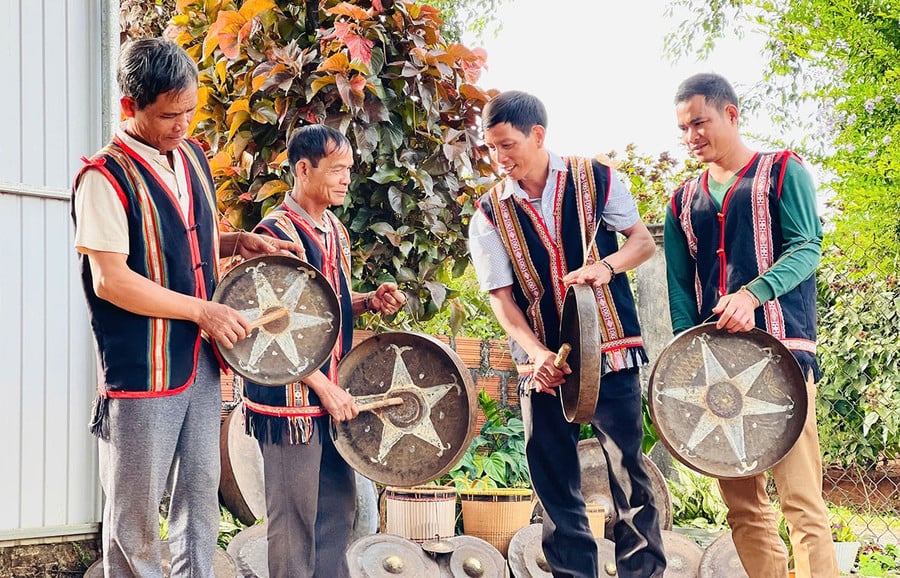
Without a leader, the gong ensemble of Dung Rơ village has almost ceased operations. The gong sets in the village have also gradually disappeared over time. Mr. Alit estimates that, besides the village's large gong set, only 5 households in Dung Rơ still preserve gongs. Those who know how to play the gongs in the village are either getting old or have passed away. The deep, majestic sounds of the familiar gong melodies of the past are gradually "falling asleep" behind the mountains and fields.
“Currently, the village only has about 3-5 elderly people who know how to play the gongs. The younger generation, because they haven't been taught, knows very little; many don't even know how to hold a gong. We old folks, though we miss them, can only keep them in our memories,” explained old man Alit.
Also expressing regret over the decline of the gong ensemble, Mr. Char, the village head, said: "Despite my efforts to encourage the villagers, I haven't been able to revive the village's gong ensemble. According to the old saying, boys must know how to play the gong, and girls must know how to dance in order to participate in the festivities and drink alcohol during the village's celebrations."
Therefore, from the age of 10-15, boys and girls in the village begin to seek out skilled gong and drum players to learn from them. However, amidst the modern pace of life, the villagers are gradually forgetting how to preserve this precious sound. Teaching gong and drum playing has become more difficult than ever as the elderly who know how to play them are gradually passing away.
"It's very difficult to persuade the villagers to stick with the gong music because they're still worried about farming. I myself am not a skilled gong player and haven't learned any formal gong music, so when I try to promote it, the villagers aren't very enthusiastic. Sometimes I feel discouraged. However, I'm still deeply committed to preserving the gong music of the village."
Therefore, in village meetings, I still diligently encourage the elders to teach the younger generation. Even in meetings with the local government, I express my desire to pass on the gong playing skills to the villagers,” Mr. Char shared.
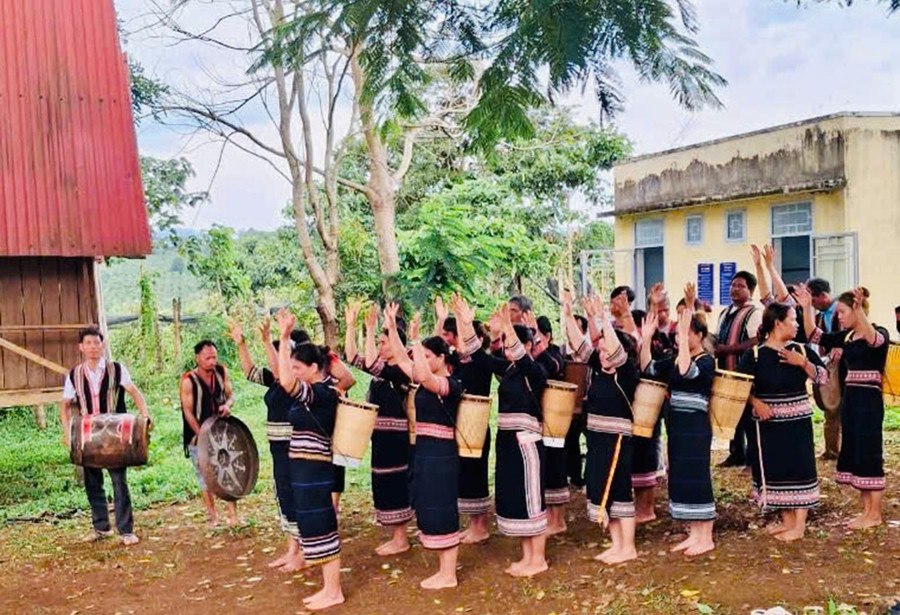
Based on the aspirations of the local people, and in line with Dak Doa district's long-term orientation towards developing tourism associated with the gong heritage, in August 2024, the District's Vocational Education and Continuing Education Center, in coordination with the local government, opened a free gong-making vocational training class for the people of Dung Ro village.
Ms. Nguyen Thi Giang, a cultural and social affairs official in Kon Gang commune, assisted the village in recruiting members for the class and actively encouraged villagers to take advantage of afternoons after work to come to the communal house courtyard to learn gong playing. "The recruitment efforts also faced many difficulties."
However, we also managed to persuade 40 people in the village to join the class. Over the course of nearly two months, the villagers became more interested in and attached to the gongs and traditional dances,” Ms. Giang said.
Cultivating love for gongs and drums.
As the deep, resonant sounds of gongs echoed from the communal house, old Alit's chest suddenly swelled with the same excitement as in his youth. It had been a long time since he had seen his village have such joyful and unifying afternoons.
“Traditionally, the Bahnar people of Dung Rơ village didn't learn to play the gongs and drums through formal classes, but rather through transmission, like grandfathers teaching grandchildren, fathers teaching sons, and elders guiding younger generations… So, when we participated in the class, we found it very new and exciting. Elderly people like me were also invited to the class to cooperate with the instructors in teaching basic techniques to those who didn't know how to play.”
"I myself am learning some more skills and more systematic gong playing techniques so that I can participate in preserving and developing the village's gong playing movement in the future," Elder Alit enthusiastically expressed.
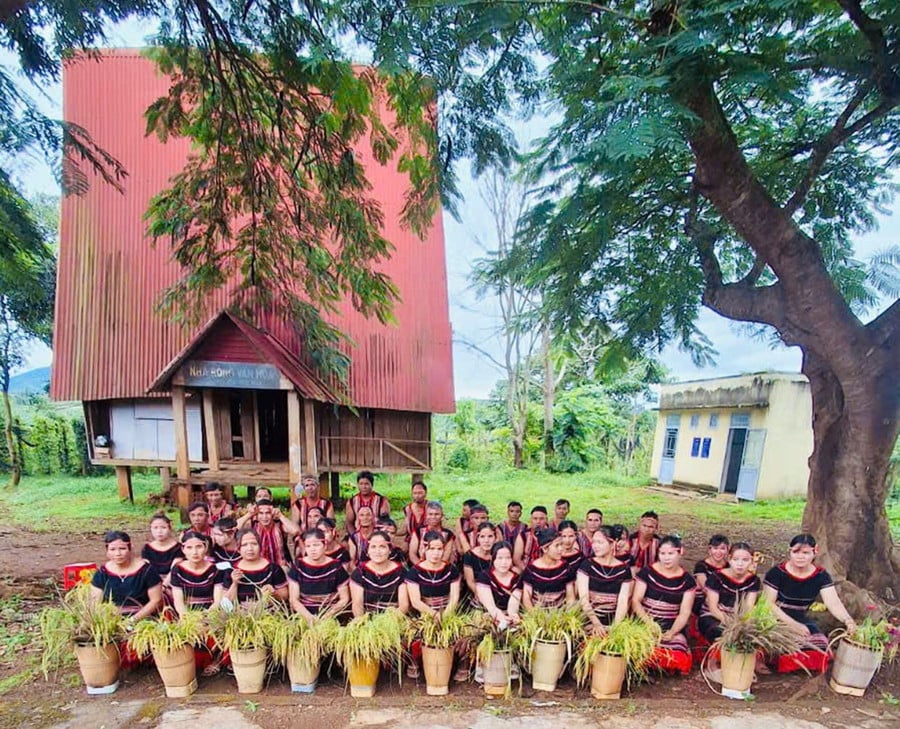
Although he had never been exposed to gongs before, when the village head encouraged him to participate in the class, Plưnh was very enthusiastic and learned quickly. He said: "I was truly lacking in my own sense of responsibility for neglecting the gongs of my people during my youth. Now that I get to learn to play the gongs with my fellow villagers, I am very happy."
After the class, I will work with the young people in the village to develop our gong-playing skills and actively participate in local festivals and competitions to spread the sound of Dung Rơ village's gongs far and wide.”
Perhaps, besides old Alit, Mr. Char was the happiest of all, as all his wishes had come true. He had thought it would be difficult to get the villagers to attend the class, but surprisingly, everyone was very enthusiastic.
Not only did the 40 registered members participate, but the villagers also actively joined in the class. Everyone looked forward to the end of the day to join in the gong music with the villagers. Dung Rơ village was once again immersed in the sounds of gongs and the traditional xoang dance.
“The instructors for the gong class are experienced gong-playing artisans. With systematic instruction, I have gained a deep understanding of the gong's sound, how to tune it, and the rhythm of each song.”
After attending the class, the villagers of Dung Rơ understood and appreciated the cultural value of the gong music even more. "We hope that after this class, we will have more opportunities to perform in many places, thereby contributing to preserving and spreading our ethnic cultural identity," Mr. Char expressed.
Mr. Nguyen Van Thanh, Vice Chairman of the People's Committee of Kon Gang commune, said: Every year, the commune cooperates with the District's Vocational Education and Continuing Education Center to survey the vocational training needs of the people in order to open classes suitable to the local situation. In particular, the people of Dung Ro village are eager to have a gong-playing class opened.
Recognizing this practical need, we facilitated the opening of a class in the village, and with the villagers' enthusiastic support, the course was very successful. Initially, the class only had 15 qualified members. However, later, villagers voluntarily applied to join, so the class grew to 40 people. The youngest student was only in 10th grade, while the oldest was nearly 60 years old. We are very pleased that the villagers have become self-aware of the importance of learning to play the gongs to maintain and develop their ethnic cultural heritage.
Ms. Nguyen Dinh Thi My Lai, Director of the Vocational Education and Continuing Education Center of Dak Doa District, informed: In recent times, the district has strengthened the implementation of vocational training programs for rural laborers. As a result, people have the opportunity to find jobs and stable incomes. In 2024, the Center opened 14 vocational training classes for rural laborers with 474 participants.
“Among the 14 vocational training classes, there is one class teaching gong playing for the people of Dung Rơ village. Based on the people's wishes, along with the district's long-term orientation on developing tourism associated with the gong heritage, the Center decided to open the class free of charge for the villagers. The class has had a positive effect, with the villagers enthusiastically receiving it,” Ms. Lai added.
Source: https://gialai.gov.vn/tin-tuc/lang-dung-ro-vang-tieng-cong-chieng.81347.aspx





![[Photo] Prime Minister Pham Minh Chinh attends the Conference summarizing and implementing tasks of the judicial sector.](/_next/image?url=https%3A%2F%2Fvphoto.vietnam.vn%2Fthumb%2F1200x675%2Fvietnam%2Fresource%2FIMAGE%2F2025%2F12%2F13%2F1765616082148_dsc-5565-jpg.webp&w=3840&q=75)





























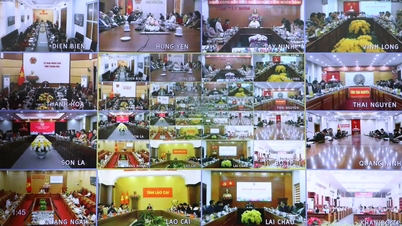









































































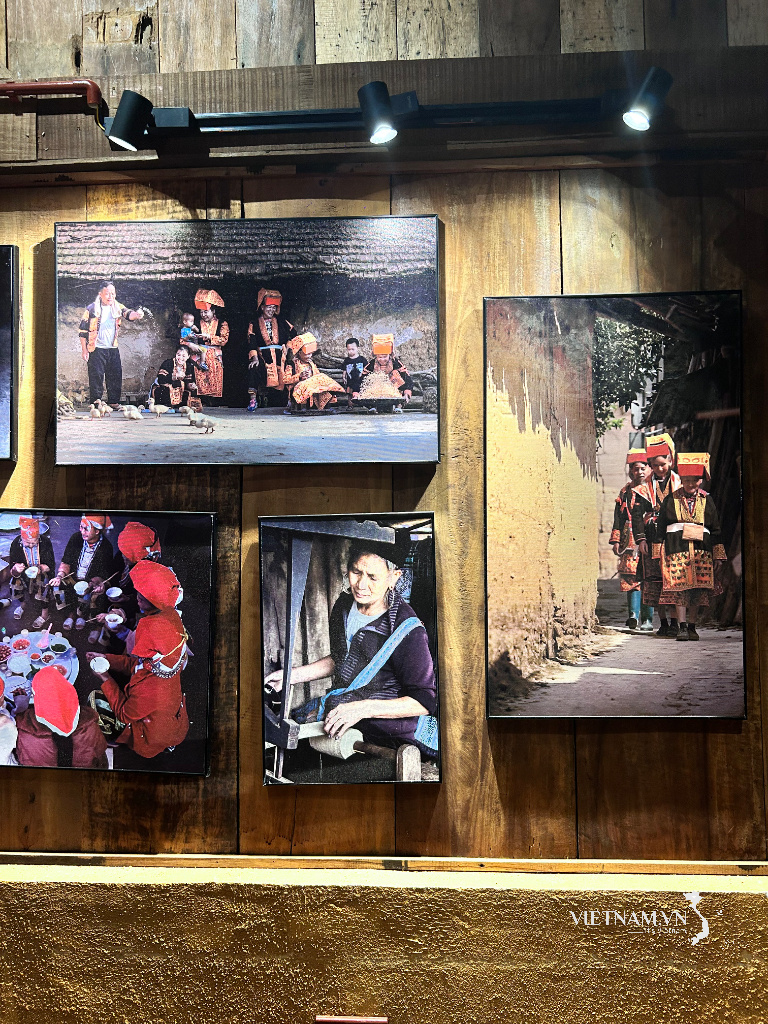

Comment (0)